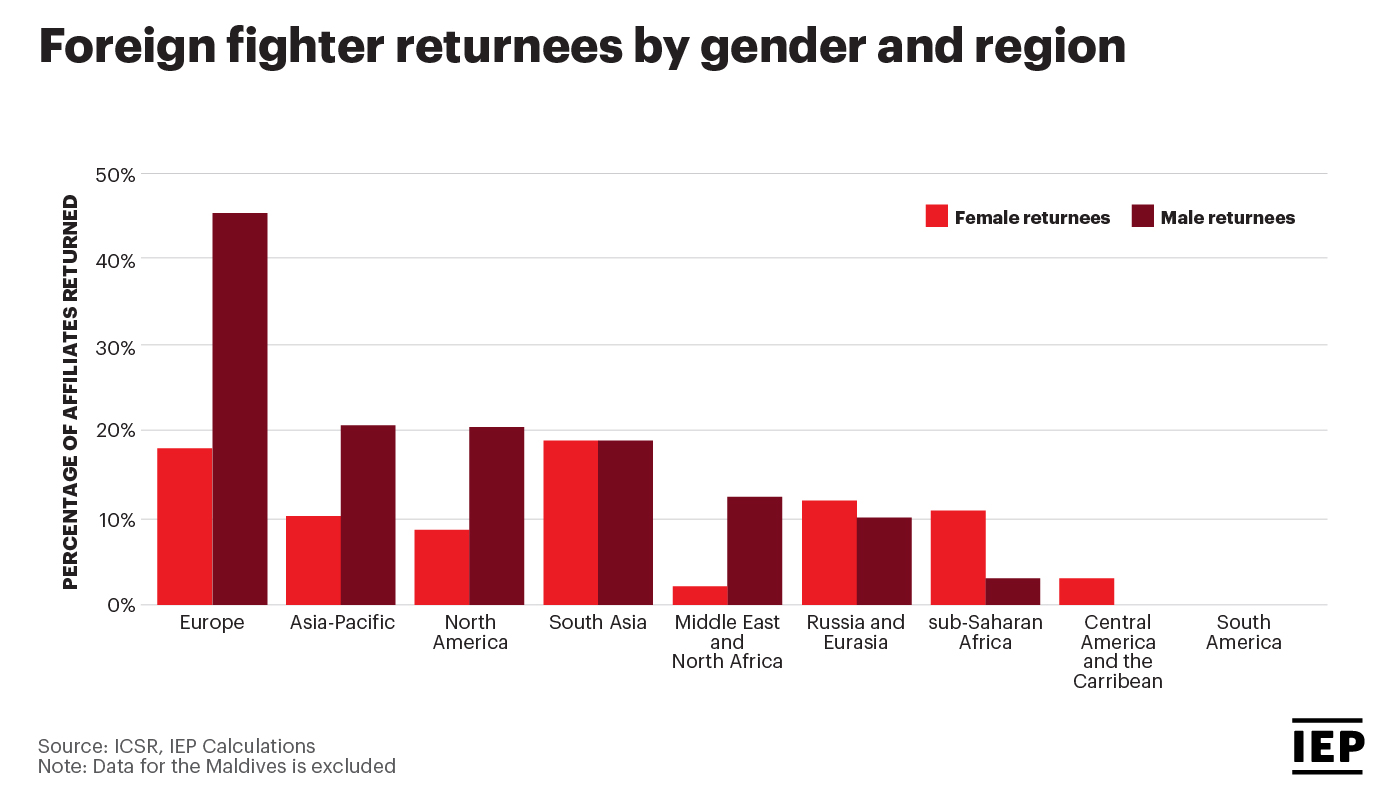Since 2013, over 50,000 foreign affiliates or foreign fighters travelled to Iraq and Syria to join Islamic State of Iraq and the Levant (ISIL) from at least 83 countries, according to last year’s Global Terrorism Index.
As the conflict declines, data tracking the repatriation of foreign fighters shows that more male foreign fighters than female foreign fighters are returning to their home countries.
At the height of the caliphate in late 2014, ISIL held over 100,000 km of territory with a population of 11 million residents.
By July 2019, approximately 16 per cent of the 52,808 foreign affiliates that joined ISIL had returned. In four of the nine regions sending foreign affiliates to ISIL, a higher percentage of male affiliates returned.
This may be due to the difficulty of repatriating children born into the caliphate, one of the many complex challenges countries have faced in dealing with former ISIL affiliates.
Globally, an estimated 16% of male affiliates returned from ISIL, compared to 9% of female affiliates.

Europe had the largest variation between male and female affiliates who returned. A total of 2,384 affiliates returned, marking 29% of total affiliates who travelled to ISIL from Europe. Of the 4,094 male affiliates, an estimated 45 per cent returned, compared to 18% of female affiliates.
Over 13% of male affiliates from MENA returned, compared to just two per cent of female affiliates. In Russia and Eurasia, more female affiliates returned compared to male, at 12% and 10% respectively.
This was largely because in Kazakhstan, at least 137 females were repatriated as part of Operation Zhusan between January and May 2019. Female returnees faced a rehabilitation and reintegration process, with five facing charges for terror-related offenses.
However, in Russia, approximately 2% of female affiliates returned, compared to 12% of male affiliates.
Until November 2017, Russia was actively repatriating women, after which point only minors were repatriated due to the perceived security risk of female ISIL affiliates.
A number of former female ISIL affiliates remain in Iraq and Syria, possibly due to the difficulty of moving with children. In al-Hol, the largest refugee camp in Syria, approximately 12,000 ISIL affiliates remain, including 4,000 women and 8,000 minors.
For the latest data and trends in global terrorism, see our global events and resources page for information on the upcoming 2020 Global Terrorism Index launch.